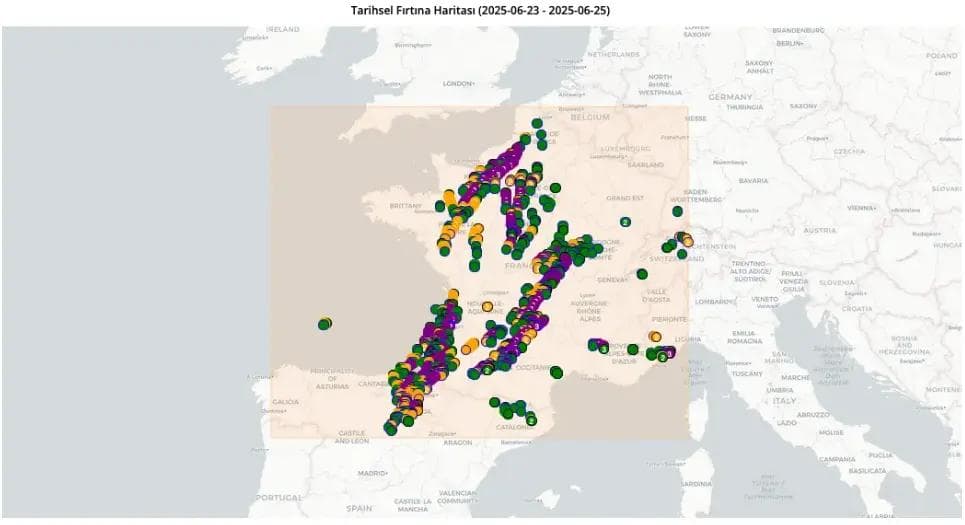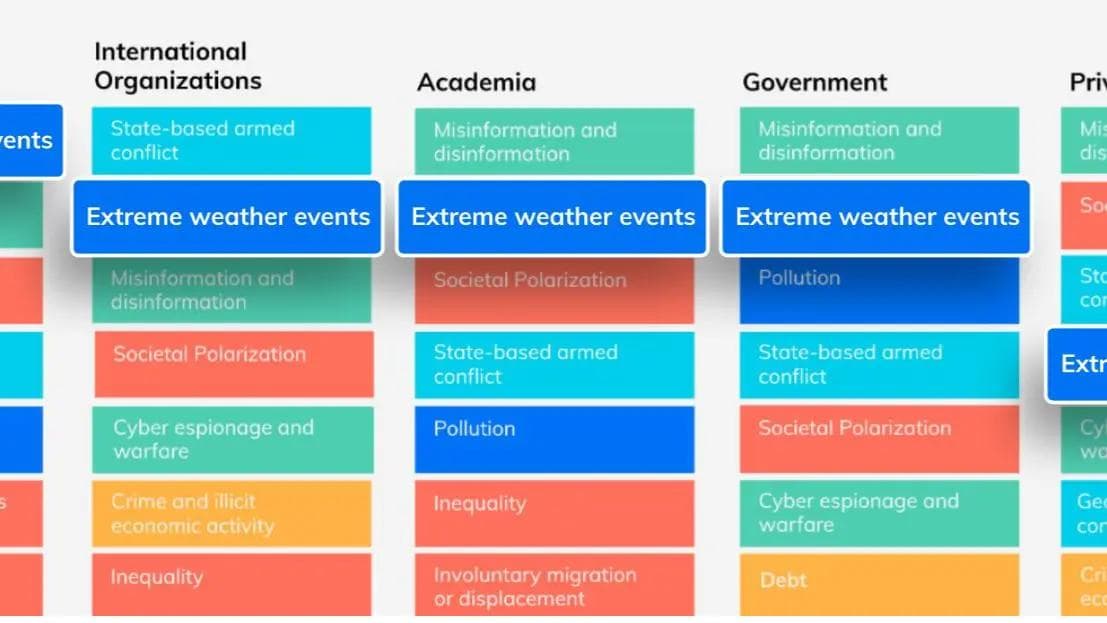The World Economic Forum’s (WEF) 2025 Global Risks Report has confirmed—leaving no room for debate—that the climate crisis is no longer just a “future threat,” but one of the most urgent and severe risks of both today and tomorrow. Yet, in the face of this stark global diagnosis, a rising front of adaptation is emerging, equipped with local and technological solutions.
While international reports analyze the devastating risks created by the climate crisis, the presence of platforms that develop data-driven solutions against these threats offers hope that the crisis can be transformed from an overwhelming disaster into a manageable one.

1. Global Diagnosis: Extreme Weather Events as the Greatest Threat
The WEF Global Risks Report has once again demonstrated that environmental risks consistently top global risk surveys. According to expert assessments, climate-intensified events sit at the very center of the global risk landscape:
Number One for the Next Decade:
The report ranks extreme weather events as the most severe global risk for the next 10 years—for the second consecutive year. This underscores how vital adaptation efforts have become due to the lack of sufficient global mitigation action.
Critical Shifts:
The risk category “Critical Changes to Earth Systems,” also near the top of the list, signals the danger of crossing irreversible tipping points in the climate system. This means not only increasing severity but also the possibility that impacts could become permanent and uncontrollable.
Fastest-Deteriorating Area:
Environmental risks show the greatest deterioration across all risk groups when comparing the 2-year short-term outlook with the 10-year long-term outlook. They form a key pressure point that triggers financial, geopolitical, and societal risks.
This global diagnosis is further evidence that the climate crisis is no longer merely an “environmental” issue—it has become a multidimensional security threat endangering economic stability, infrastructure resilience, and social order.

2. The Local Line of Defense: iklim.co
While the WEF report lays global threats on the table, iklim.co is building a technological line of defense against them. This platform offers concrete, data-driven solutions to manage the impacts of global risk at the local level:
The Vital Role of Early Warning
iklim.co functions as an Early Warning System that detects and tracks extreme weather events—such as storms, lightning, hail, and tornadoes—with high precision. Against “Extreme Weather Events,” the number-one risk identified by the WEF, the most fundamental defense mechanism is delivering the right information at the right time.
Sectoral Resilience
iklim.co focuses on sectors most vulnerable to weather conditions, including Insurance, Energy, Agriculture, and Transportation.
- Insurance Companies:
Real-time alerts enable policyholders to take preventive action, reducing both damage and payout burdens for insurers. At the same time, verified storm alerts help prevent fraudulent claims. - Energy & Infrastructure:
It provides real-time lightning data for critical assets such as wind farms, preventing major damage and outages.
The Power of Data & Technology
iklim.co’s solutions combine its proprietary lightning and storm detection network with cutting-edge technologies such as AI-powered analytics, satellite data, and Remote Sensing to deliver the most accurate insights possible.

3. Global Risk, Local Solution: From Risk to Resilience
While global leaders continue to push for the goals of the Paris Agreement (mitigation), local tech initiatives are working to minimize the impacts of risks that are already increasing (adaptation). Together, these two efforts form an inseparable whole in the fight against the climate crisis:
- Global Mitigation is essential to address the root causes of climate change.
- Local Adaptation and Early Warning Systems are indispensable to reduce the economic and human costs of Extreme Weather Events that are already at our doorstep and expected to intensify.
Regions like the Mediterranean basin—which includes Türkiye—are among the most affected by global temperature rise. Therefore, developing local, technology-driven solutions against the most critical threats highlighted in the global risk report is not only about protecting financial profitability but also about ensuring societal safety and infrastructure continuity.
In summary, the WEF tells us what is coming, while iklim.co provides the practical roadmap for how to weather what’s coming with minimal damage. Success in the climate crisis is possible—even where international policies fall short—through proactive, data-driven risk management powered by technology.




